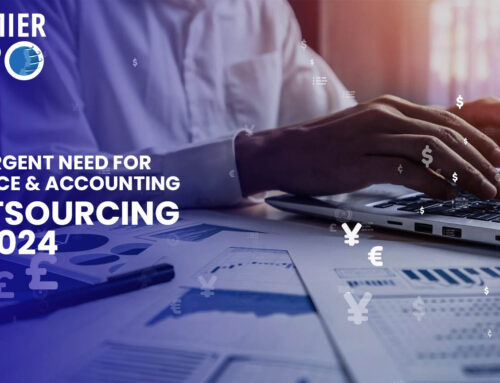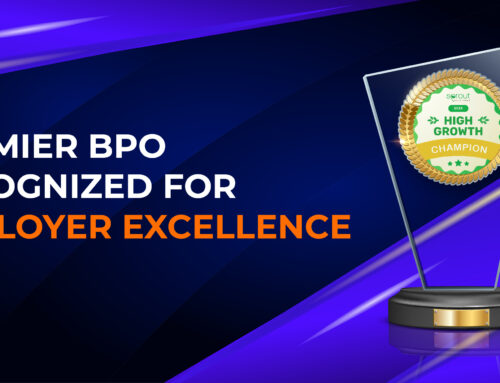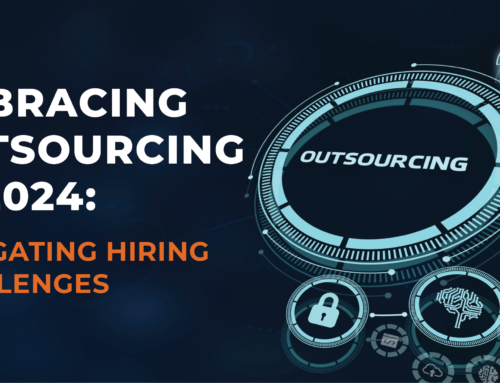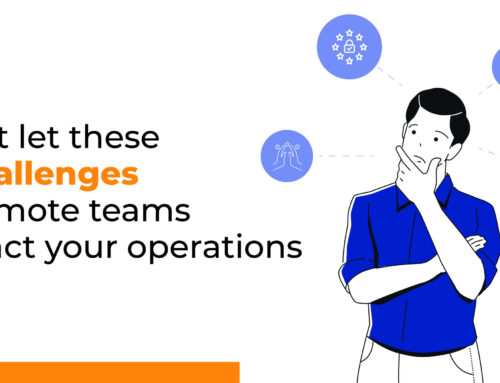Customer Satisfaction greatly depends upon omnichannel customer experiences, affecting the value of your organization based upon the responses received by your consumer base. Exceptional Customer Service is directly proportional to business growth and sustainability. The more effortless experiences your customers have upon interaction with you, the greater Customer Loyalty you will inspire.
“The customer’s perception is your reality.” – Kate Zabriskie
61% of customers say they will stop interacting with a brand due to poor service – BizTimeDoctor
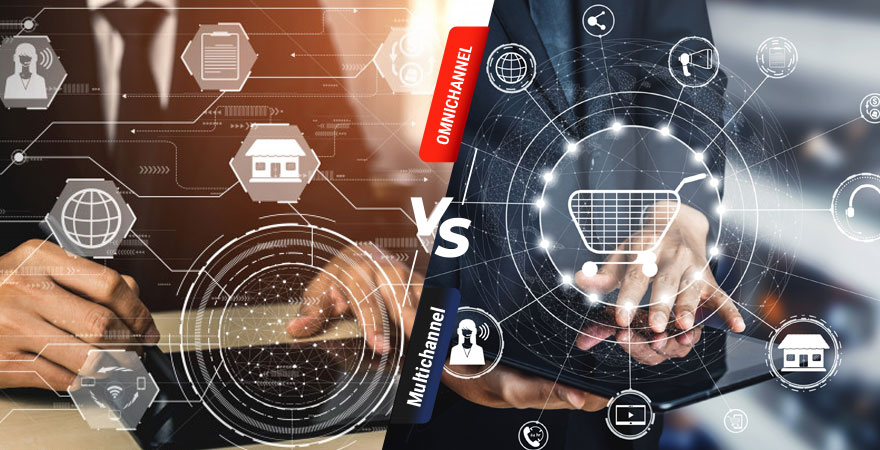
Contact centers serve as a communication line between the customer and the service provider across multiple channels, allowing interaction and support to the consumer regarding the respective product or service offered. Since retaining customers is less expensive than creating new ones, Customer Experience (CX) should be any brand’s top priority when looking to expand. If you can effectively deal with all of your customers’ pain points, making them feel like they are being heard, then Customer Retention no longer remains a concern.
The Contact Center and Modern Customer Service
Customer Service has dramatically transformed in light of evolving needs during the pandemic, forcing companies to innovate in order to stay relevant. The top drivers for providing greater Customer Experiences are fierce competition between service providers, better value-added service, exceptional quality, and above all, personalization. Automation always comes into play when organizations try to scale up, but this may not always mean that your Contact Center is suited to handle your customer’s every need. According to Forbes, the modern-day business landscape’s CX should accommodate for:
Focus on CX as a company differentiator
Providing more personalized, human experiences rather than automating everything
Customer Advocacy as marketing for sustainability
Providing greater value to the customer
Automating certain customer experiences to redefine company growth patterns
The global market size for contact centers is projected to grow from USD 339.4 billion in 2020 to 496 billion USD by 2027 – Statista
In the past Contact Centers responded to customer queries only when an issue arose. Nowadays, Customer Engagement plays a critical role in redefining business services to suit the type of customer. There are more touchpoints between the customer and service provider today than there were ever before; hence comes in the multichannel or omnichannel contact center experience.
What is a Multichannel Contact Center?
Multichannel Contact Centers precede Omnichannel ones, applying methods used in traditional contact centers. Multichannel contact centers support multiple means of communication that are unrelated to each other and work independently. For example; E-mail, call, social media, chat, etc. all are open modes of communication between the client and company, but the person dealing with your customer on one end cannot see any query communicated on any other channel.
So, if a customer enquires something via chat, then sends an email, and tries calling afterward; your team will have no knowledge of any previous communication. This not only creates redundancy for your team but also frustrates the customer enough to think their issue is not being resolved. The good thing is that it gives the customer the choice to choose their mode of communication for themselves.
What is an Omnichannel Contact Center?
Omnichannel contact centers, on the other hand, promise a seamless Customer Experience which let us be honest, is exactly what every customer wants and needs. Coming from the Latin phrase “Omni” which means “all”, they allow the customer to interact with your representatives across multiple channels, except they are all linked and visible under one platform. Applying universal queuing, they provide more personalization and access to every touchpoint in the customer journey.
For example, a customer’s information gathered for a particular query across a call, email, and chat is visible to any other person addressing the issue via a shared company database. This creates the ease to use for all future communications and enables timely response to any problem. All previous interactions and escalations are visible to the current person/team working on it. Omnichannel contact center capabilities include end-to-end visibility of conversations, integration, and reduced average handle time.
Autonomous omnichannel contact center
As the name suggests, automation is built into the omnichannel contact center structure to expedite operations through machine learning by reducing the load on your internal team. It also helps redirect customers requiring human interactions to CS representatives by filtering based on pre-determined guidelines. It is an efficient method for very large companies that have huge amounts of day-to-day customer interactions.
Differences between Multichannel and Omnichannel Contact Centers
In light of the pandemic and subsequently rising customer demands, the contact center market has become ever competitive, creating more and more options to choose from. Many may believe that omnichannel and multichannel are the same, but there are some notable differences between the two. Depending on the type of contact center requirements and the scale a business needs, either may be the right choice.
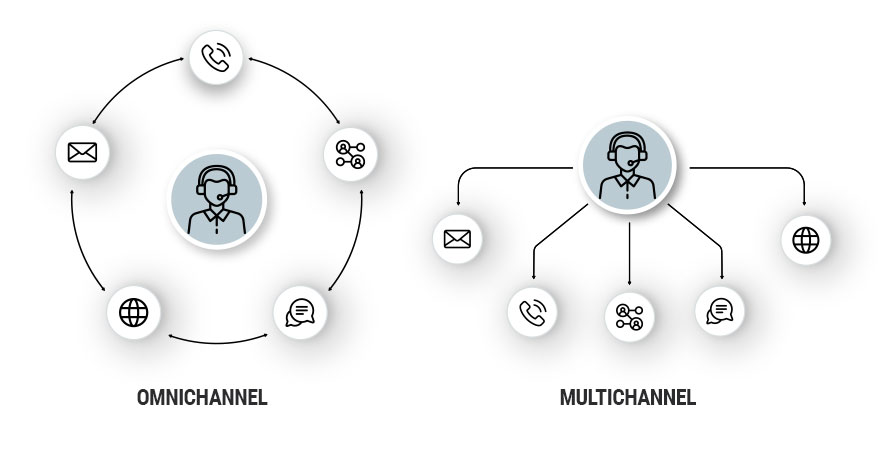
| Omnichannel Contact Centers: | Multichannel Contact Centers: |
|---|---|
| Provide you a map of the entire customer journey step by step | Customer journey points change with every point of contact |
| All channels operate under one combined platform (integration) | All channels operate separate and independent from each other |
| Information across different channels is visible at every touchpoint | Information across different channels is inaccessible for various touchpoints |
| Personalized, fast, and problem directed solution | It may require several tries to resolve an escalated problem |
| Legacy systems can be upgraded with API technology | Legacy systems may not be compatible with API technology |
| Cost-saving with greater CSat scores | Expensive to hire more with lower CSat scores |
| Time-saving as redundant interactions are eliminated | More time consuming as customer interactions may be redundant |
| Flexible and hassle-free | Customers choose interaction channel but repeat previously communicated information |
| Customer chooses interaction channel and continues where the conversation was left off previously | |
| FCR and NPS scores increase | |
| Greater productivity and customer insight |
Why Premier BPO
Migrating from a legacy system to a cloud-based one might be a big problem if your systems are incompatible. Here a well-versed third-party service provider may be sufficient to guide you through the process, or better yet help transition your entire system by unburdening your internal resources. An Outsourcing partner like Premier BPO provides digital contact center capabilities to help organizations transition, as well as set up new systems for on-premise, off-premise, and cloud contact centers.
Customer Service is our differentiator and we promote a customer-centric culture. Hence, we understand how important it is to deliver results above and beyond expectations. Our Contact Center Solutions are omnichannel, provide round-the-clock technical support, and are improved upon extensive customer feedback analysis. Our teams are extensively trained for clear, empathic interactions, resulting in remarkable FCR rates and CSat scores. Find out more about our Contact Center Services or drop us a query at our website, and we will get back to you at the earliest.
 Skip to content
Skip to content
